This site is a wetland restoration project on the Olentangy River that includes forest habitat on the slope of the riverbank until it meets a parking lot. The area is heavy in deciduous tree growth with a healthy understory. This transitions into semi-aquatic and aquatic plant growth near and in the water.
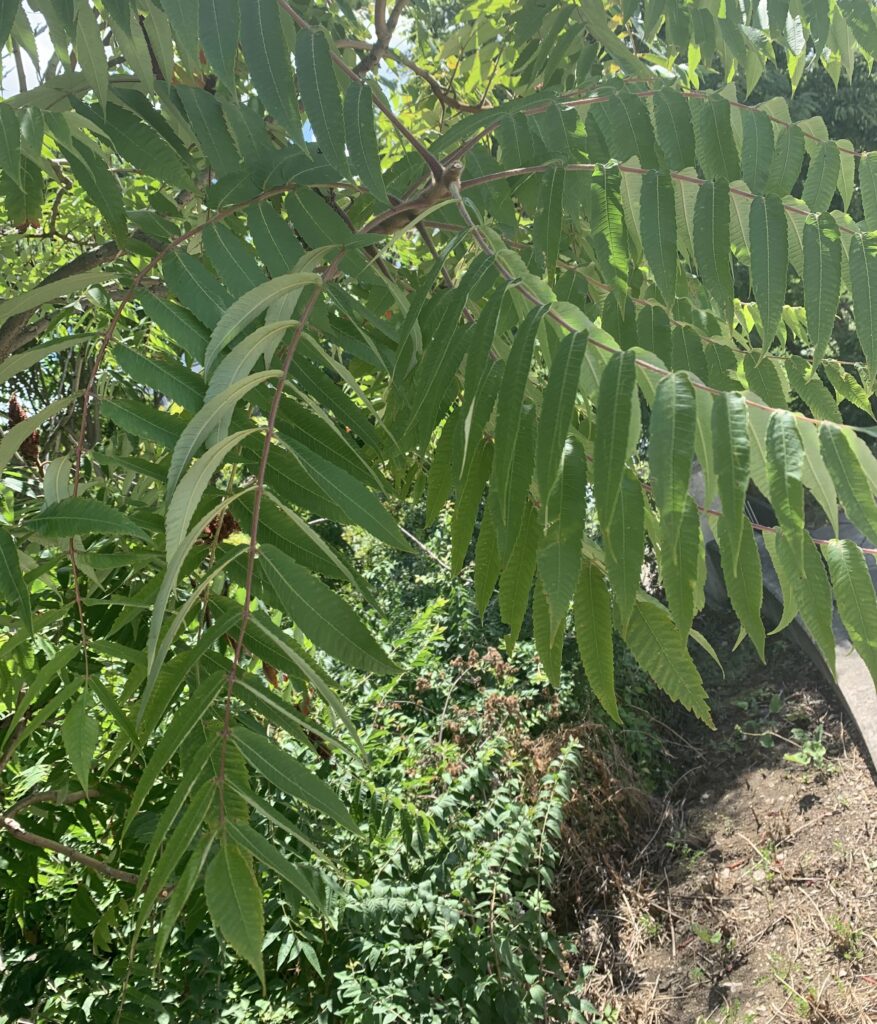
Staghorn sumac, Rhus typhina
This tree is most recognizable by its bright red, horn shaped clusters of flowers. The buds can be made into a lemonade after boiling, and the tangy taste is why the other common name for this species is the vinegar tree [source].
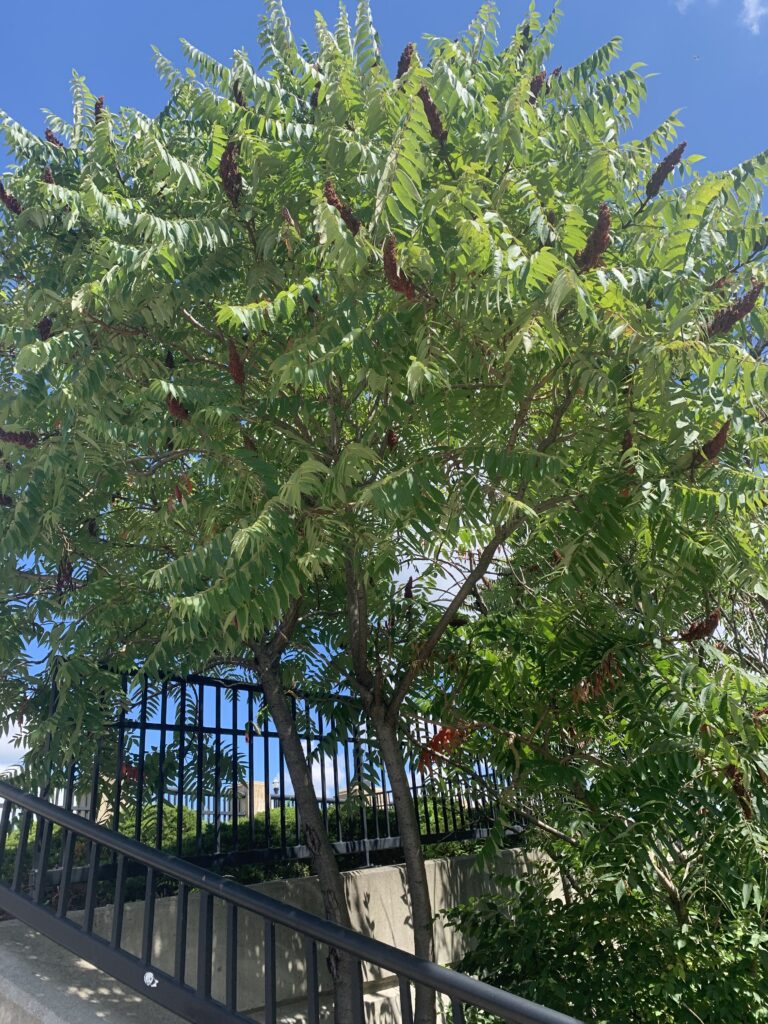
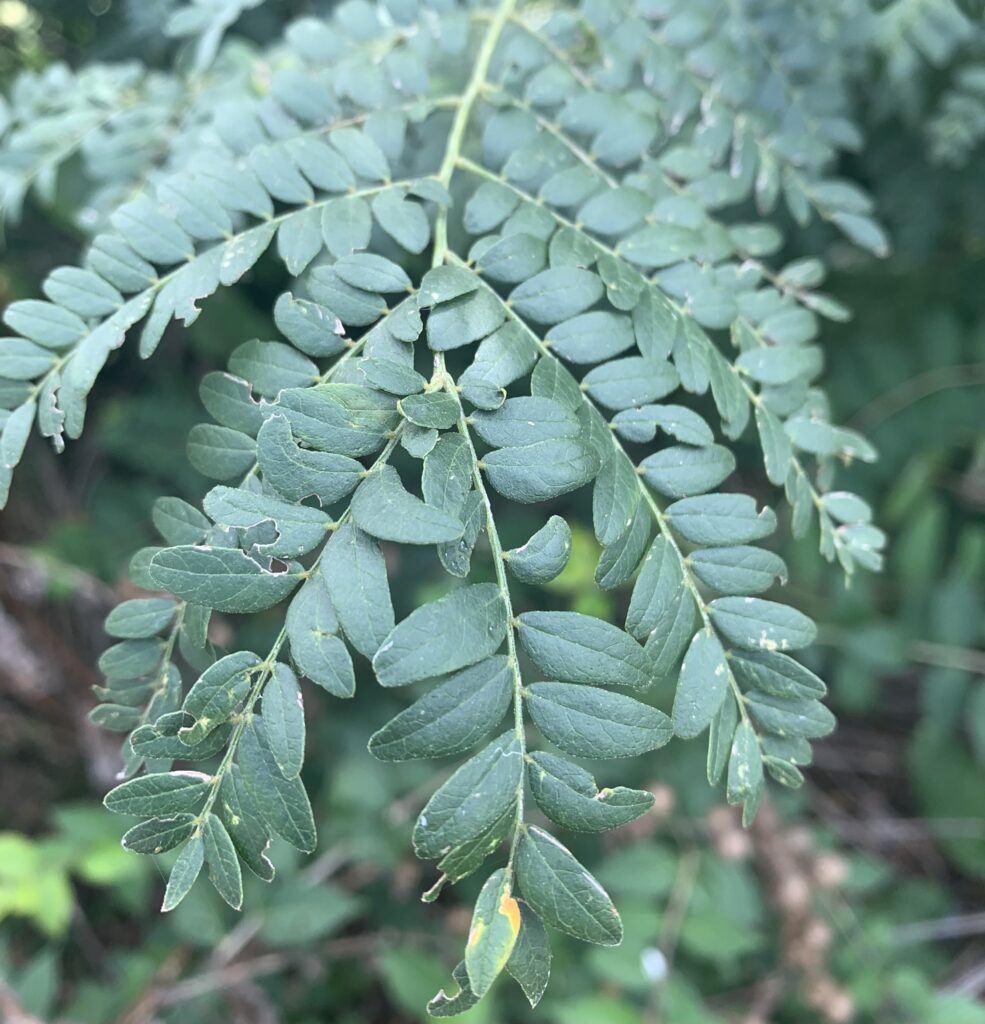
Honey locust, Gleditsia triacanthos
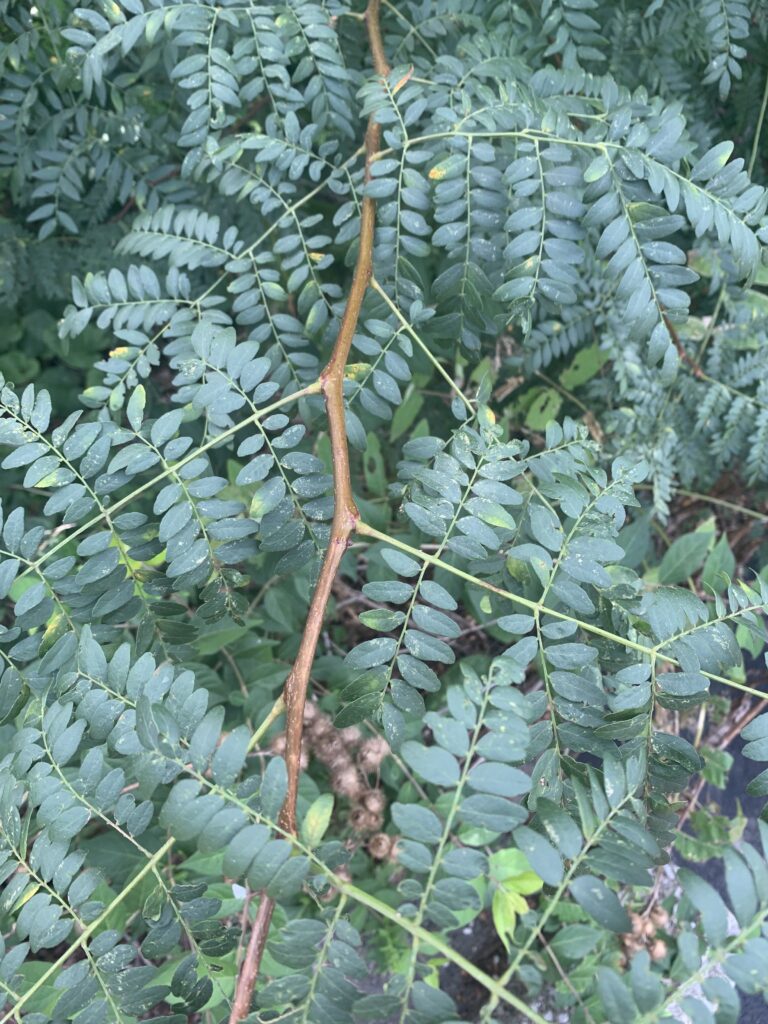
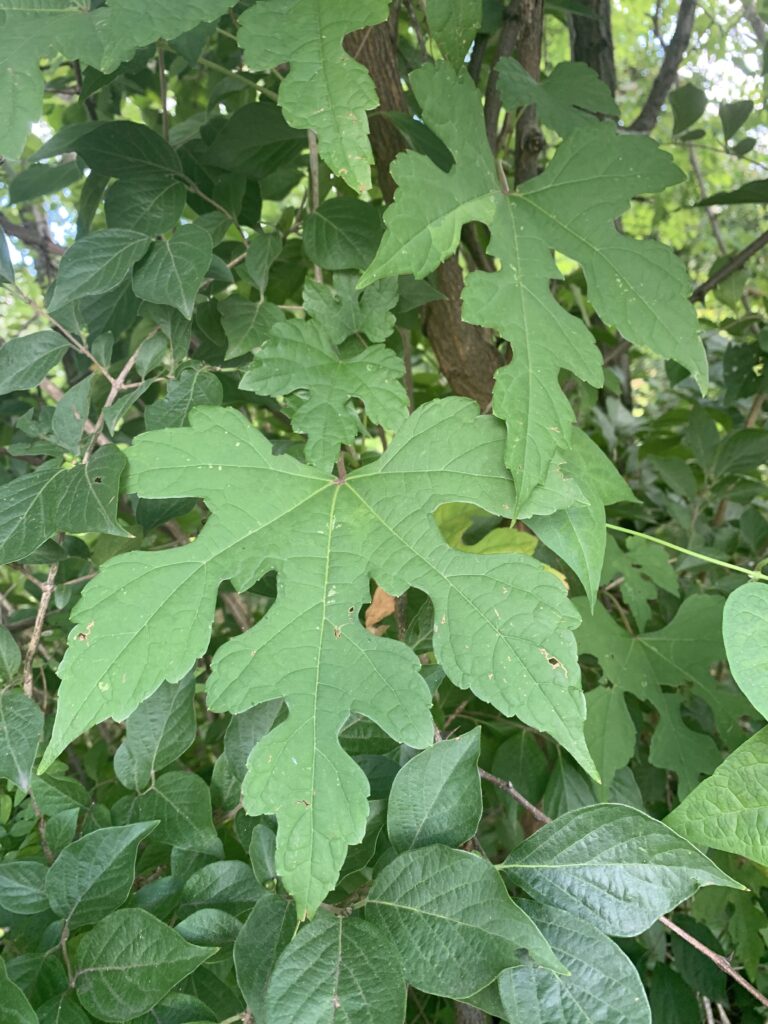
Porcelain berry, Ampelopsis glandulosa
This invasive woody vine is in the grape family and native to Japan and Northern China. It was intentionally introduced in the 1870s as an ornamental plant [source]. Each of the fruits contain two to four seeds, and the taproot is known to resprout after initial removal, both of which allow fast spread of the species.
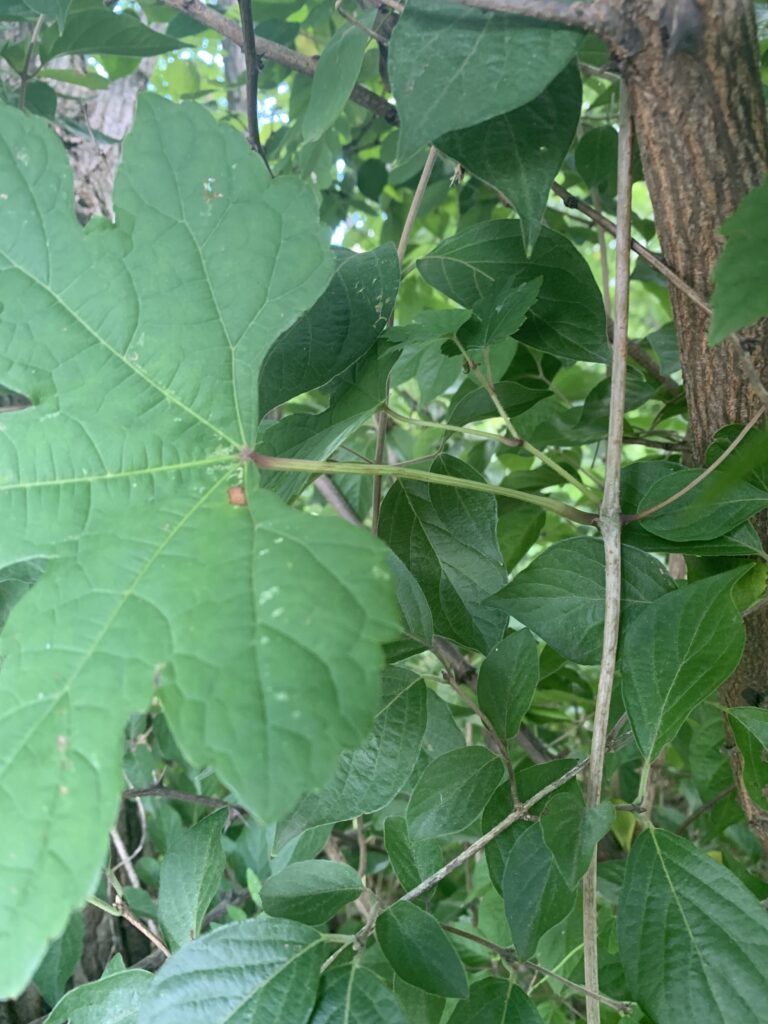

Amur Honeysuckle, Lonicera maackii
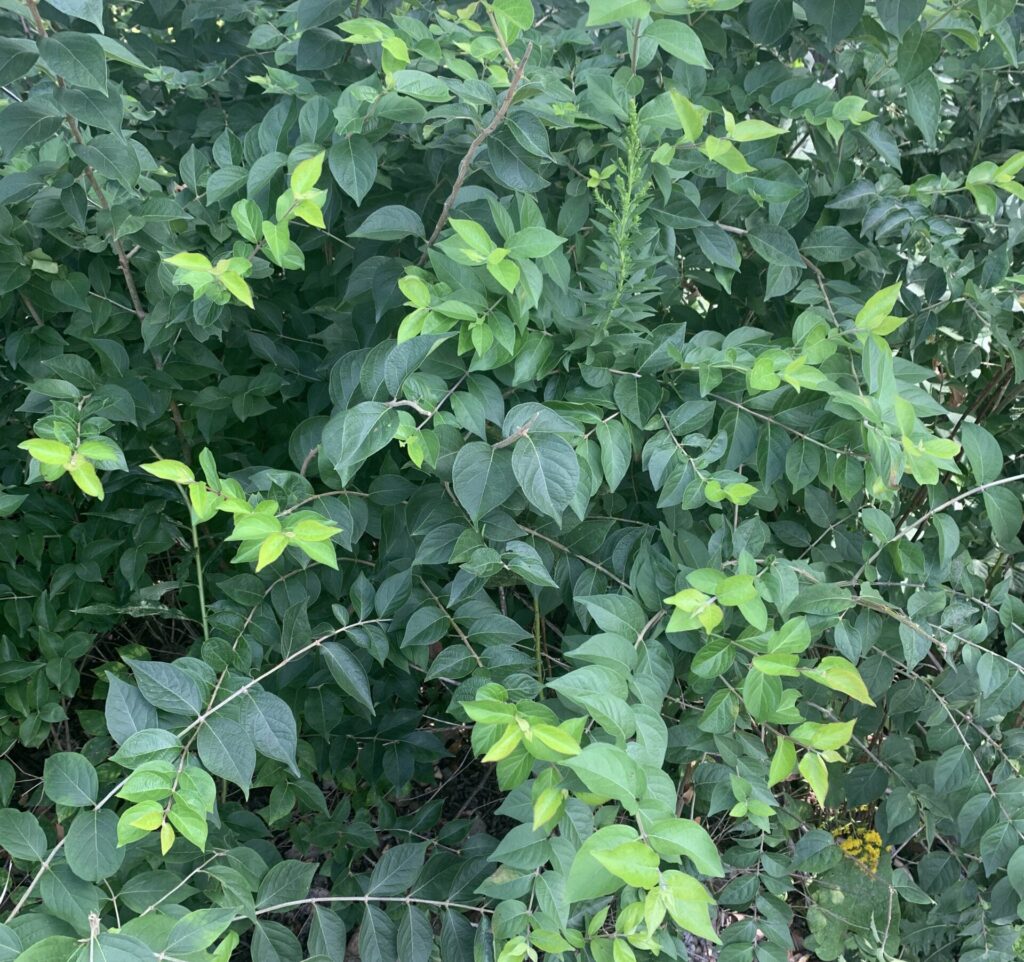
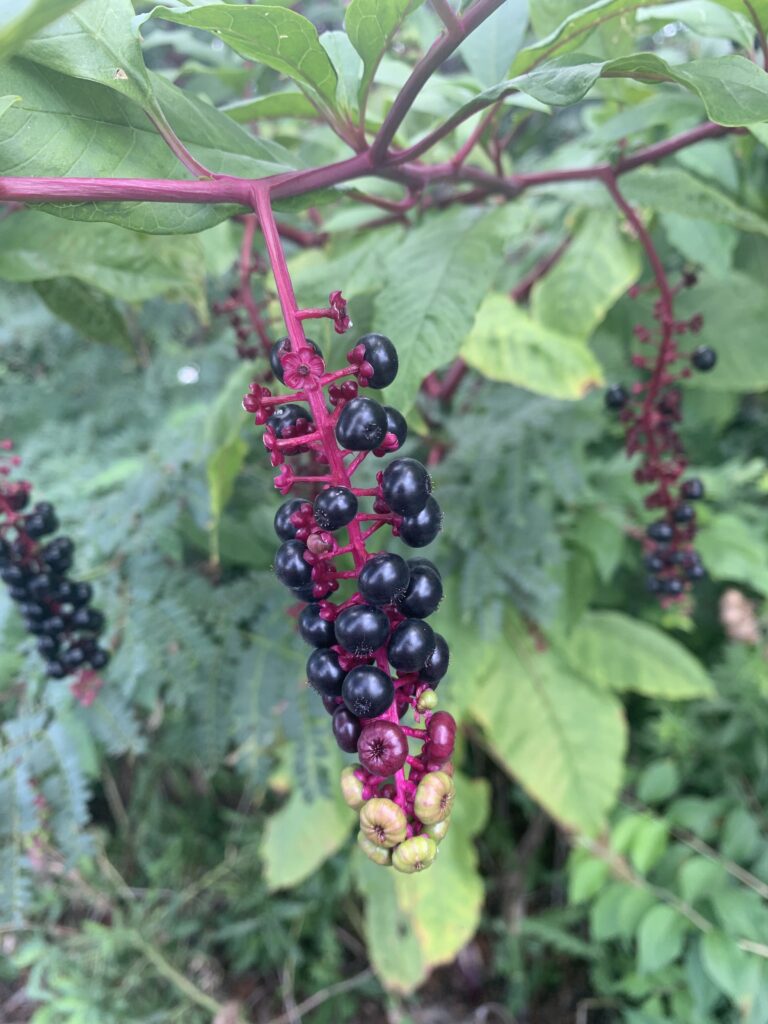
American pokeweed, Phytolacca americana
The deep purple berries and bright purple stem make this species easy to spot in late summer and early fall. Birds love to eat the berries, but all parts of the plant are poisonous to humans except for early leaves boiled at least twice in new changes of water. The species is also susceptible to the mosaic virus, which presents as patches of lightened coloration on the leaves [source].
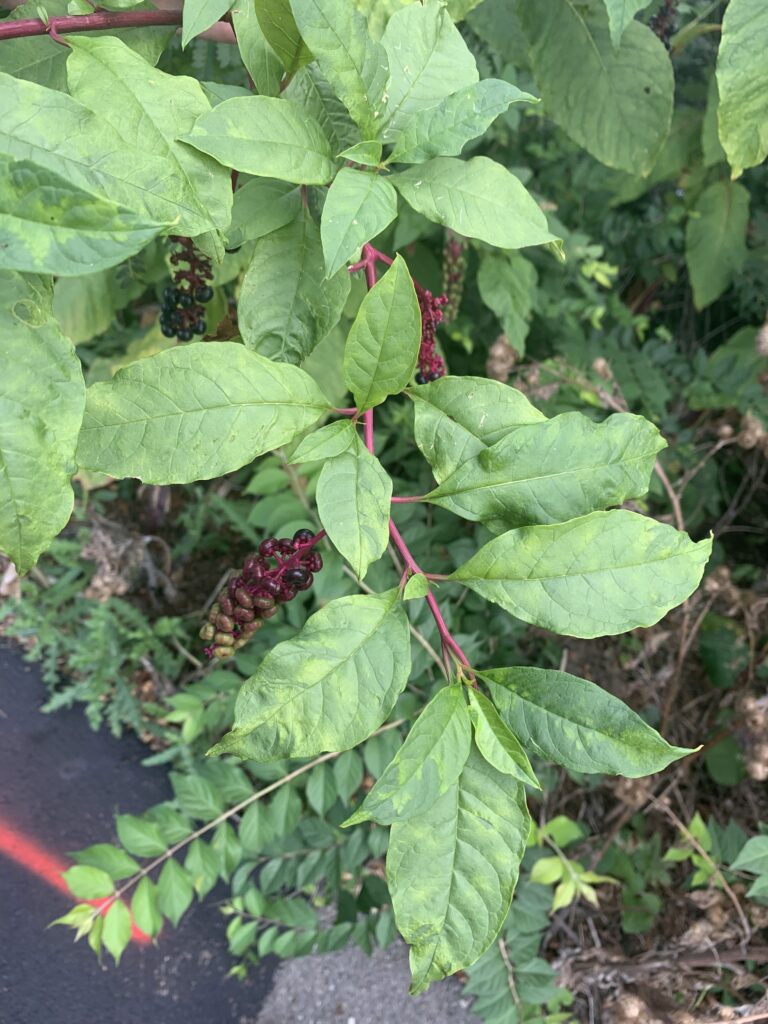
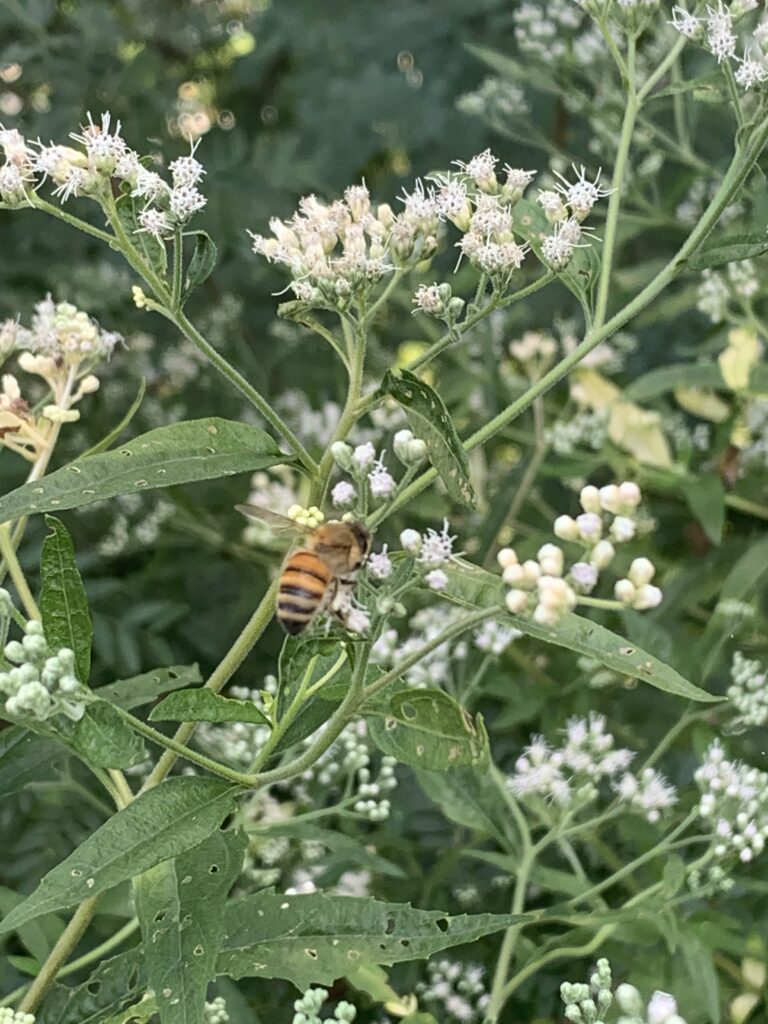
Late boneset, Eupatorium serotinum
The flowers of this herbaceous perennial are popular with many species of insects for its nectar and pollen. Mammals tend to avoid this plant, however, because of the bitter tasting leaves [source].
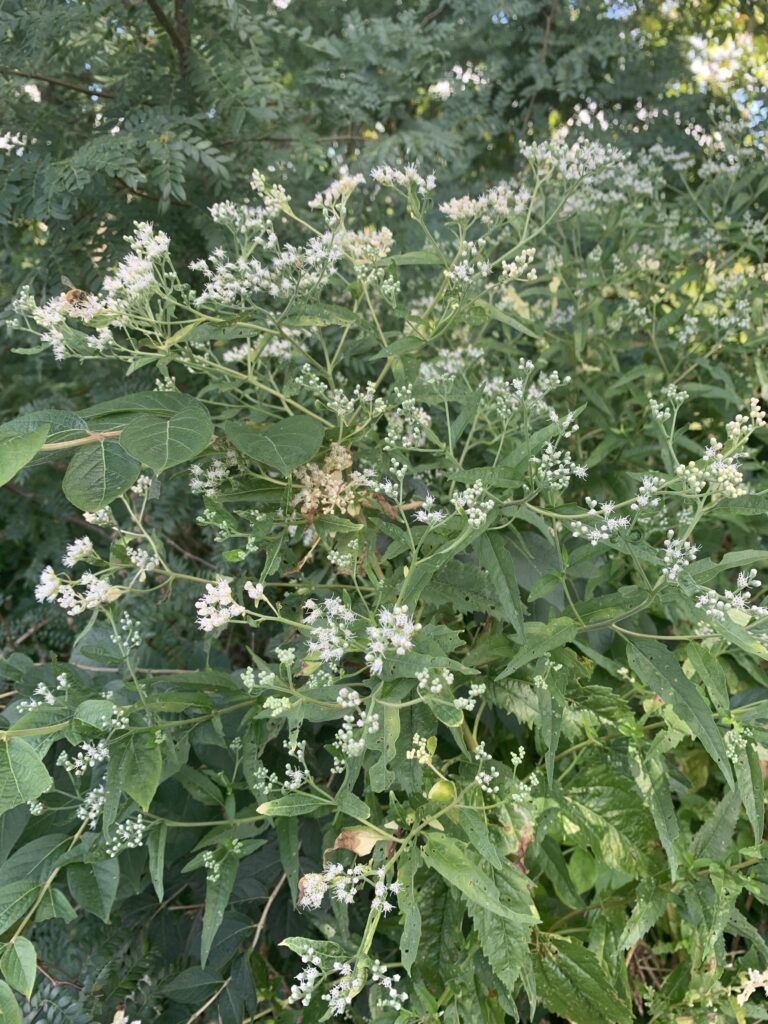
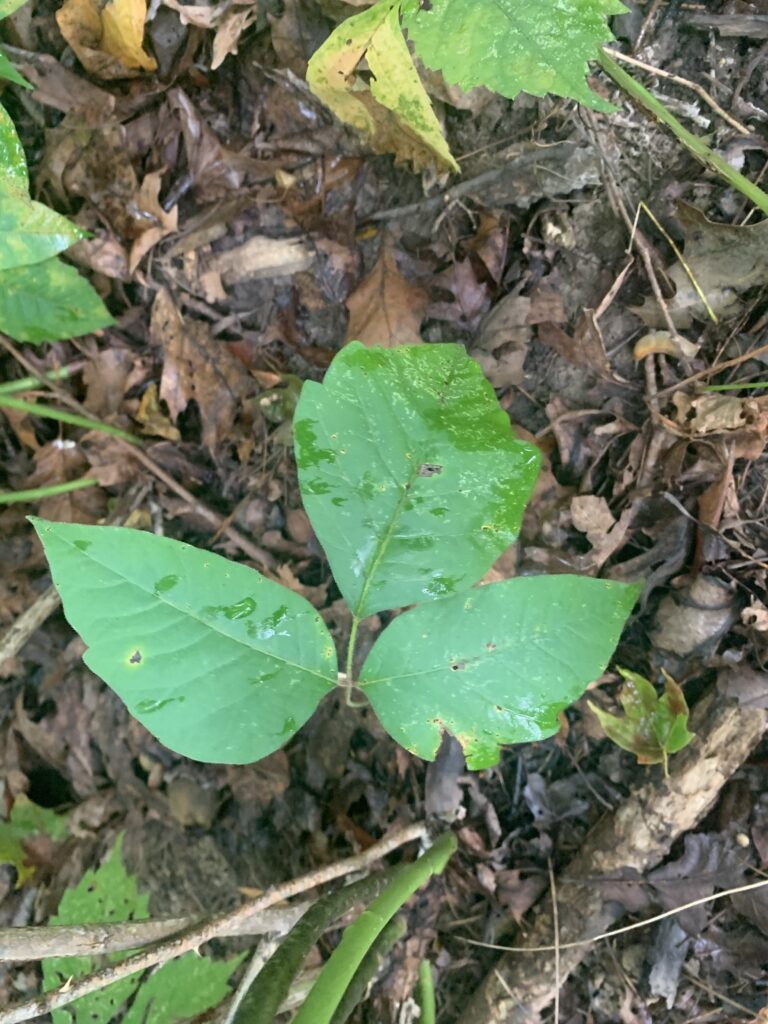
Honorable mention:
Poison ivy, Toxicodendron radicans
These specimens were found on the field trip, not at my botanical survey site. This was the first time I had seen the fruit! The way I identify this plant is the pair of leaves with mirrored ridges a bit below the third leaf. On larger specimens, the main vine has characteristic hair-like appendages. The leaves can turn bright red during the fall.
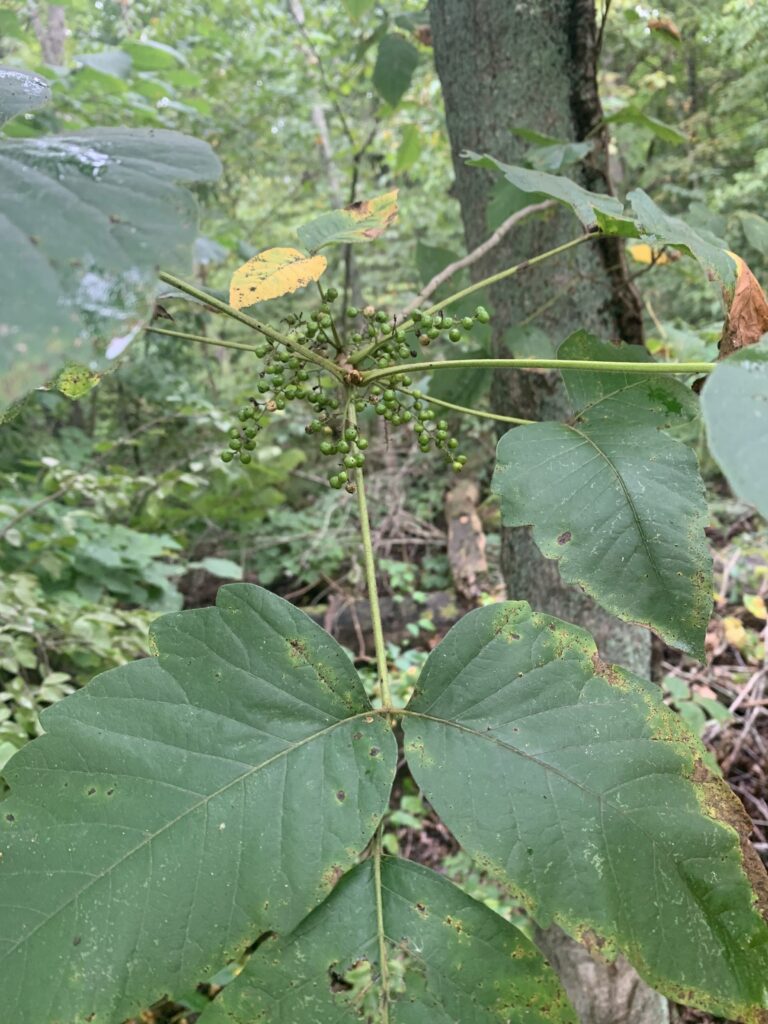
Species found so far at the site:
| Common Name | Scientific name | Native status | C of C value | |
| 1 | Honey locust | Gleditsia triacanthos | Native | 4 |
| 2 | Common buckthorn | Rhamnus cathartica | Invasive | 0 |
| 3 | American pokeweed | Phytolacca americana | Native | 1 |
| 4 | Black locust | Robinia pseudoacacia | Native (southern OH) | 0 |
| 5 | Amur honeysuckle | Lonicera maackii | Invasive | 0 |
| 6 | Late boneset | Eupatorium serotinum | Native | 2 |
| 7 | American elm | Ulmus americana | Native | 2 |
| 8 | Greater burdock | Arctium lappa | Invasive | 0 |
| 9 | Common motherwort | Leonurus cardiaca | Introduced | 0 |
| 10 | Riverbank grape | Vitis riparia | Native | 3 |
| 11 | Eastern black walnut | Juglans nigra | Native | 5 |
| 12 | Climbing milkweed | Cynanchum laeve | Native | Not listed |
| 13 | Porcelain berry | Ampelopsis brevipedunculata | Invasive | 0 |
| 14 | Lesser burdock | Arctium minus | Invasive | 0 |
| 15 | Early goldenrod | Solidago juncea | Native | 2 |
| 16 | Staghorn sumac | Rhus typhina | Native | 2 |
| 17 | River birch | Betula nigra | Native | 9 |
| 18 | Canadian bluejoint | Calamagrostis canadensis | Native | 4 |
| 19 | Callery pear | Pyrus calleryana | Invasive | 0 |
| 20 | Purple crownvetch | Securigera varia | Introduced/Invasive | Not listed |
| 21 | White vervain | Verbena urticifolia | Native | 3 |
| 22 | Swamp white oak | Quercus bicolor | Native | 7 |
| 23 | Sweet buckeye | Aesculus flava | Native | 7 |
The Floristic Quality Assessment Index

“The formula most commonly used… where I = the FQAI score, CCi = the coefficient of conservatism of plant species i, and Nnative = the total number of native species occurring in the community being evaluated” Andreas et al. (2004). Nnative = 15
I = (4/sqrt(15)) + (1/sqrt(15)) + … = 13.168

“N can be modified to include all species at a site, instead of just native species… where I’ = the modified FQAI score, CCi = the coefficient of conservatism of plant species i, and Nall species = the total number of species both native and non-native” Andreas et al. (2004).
I’ = (4/sqrt(23)) + (1/sqr(23)) + … = 10.634
FOUR HIGHEST CC (conservative) native species: For one explain WHY it has a high CC from an ecological viewpoint.
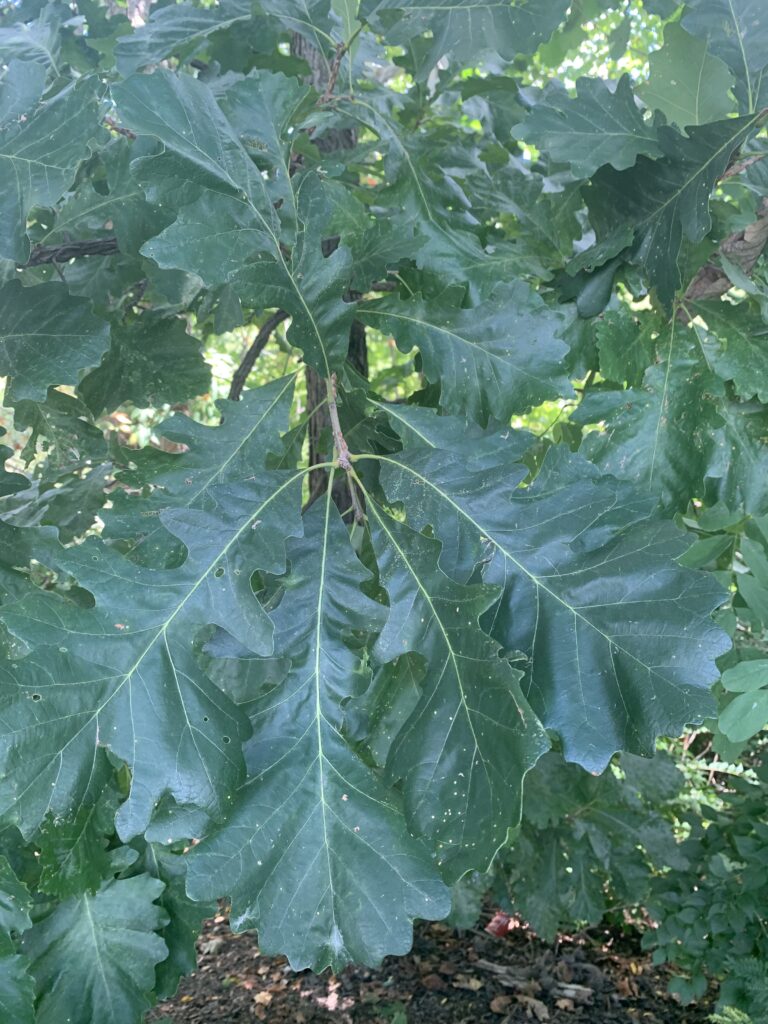
Swamp white oak, Quercus bicolor is easily confused with white oak (Quercus alba), but based on comparing leaf shape images of the two I’m pretty sure this is Quercus bicolor. Though generally durable, this species is susceptible to a wide range of afflictions, including “anthracnose, canker, leaf spot, rust, blight, galls, caterpillars, borers, leaf miners, oak lace bug and oak mite” [source].
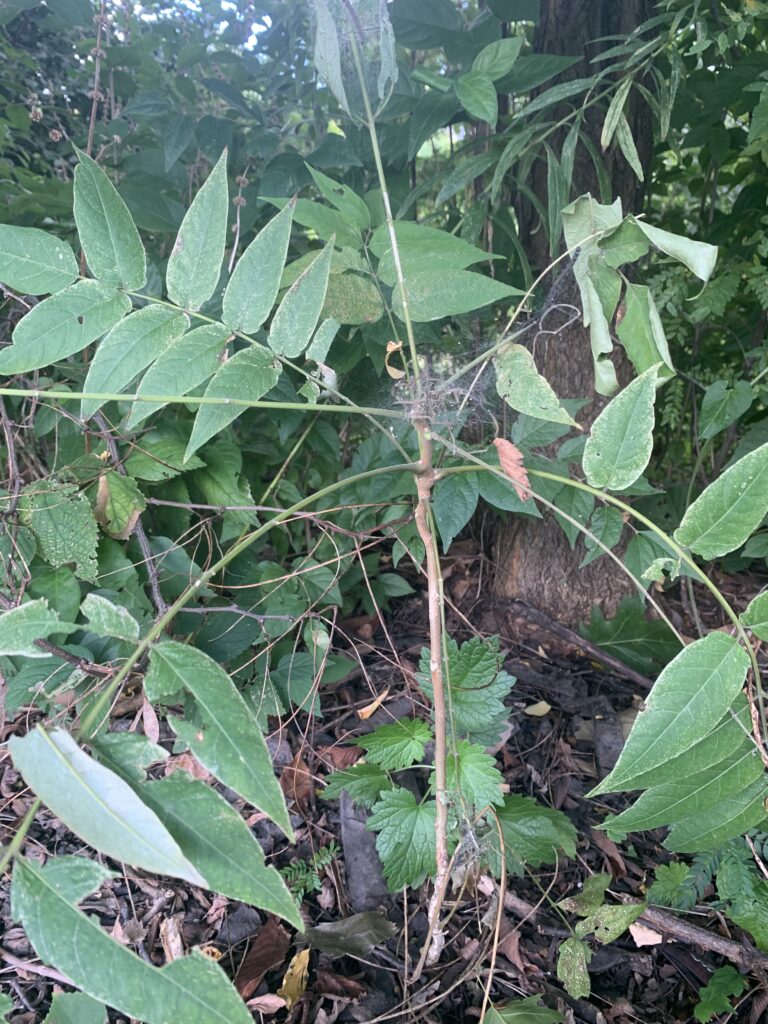
Eastern black walnut, Juglans nigra has pinnate compound leaves with 5-25 leaflets, and a v-shaped leaf scar. The wood is sturdy and resistant to decay, and was used heavily by European settlers in what would become the US. The nuts are used in many traditional desserts [source].
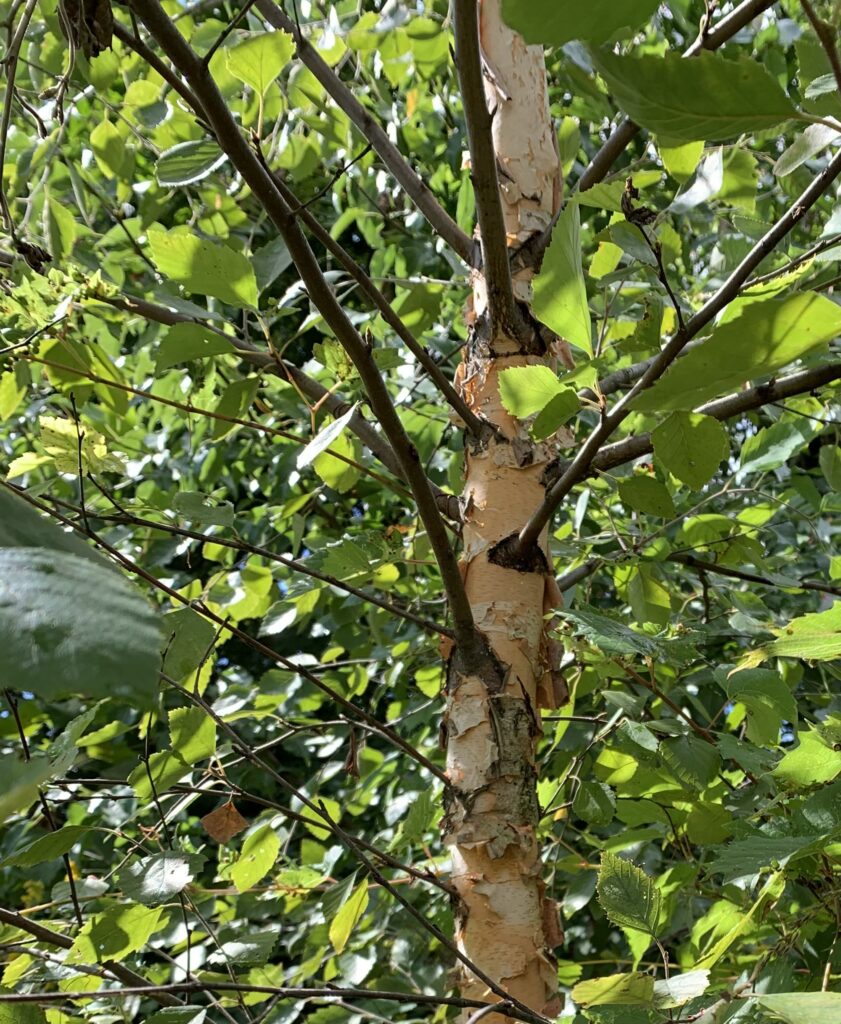
River birch, Betula nigra
The peeling bark of birch trees are distinctive, and the warm tan color of this specimen indicates the species. Because it will tolerate acidic soils, it has been used to reclaim areas that have been strip mined and have high soil levels of residual coal acids [source].
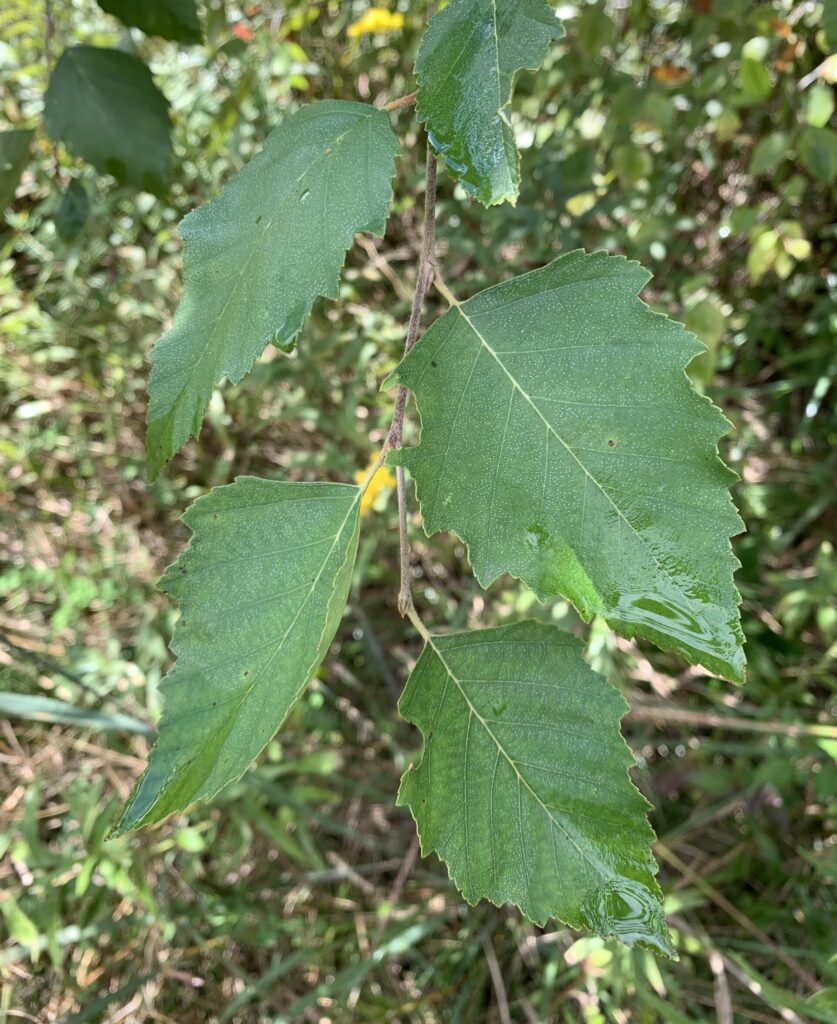
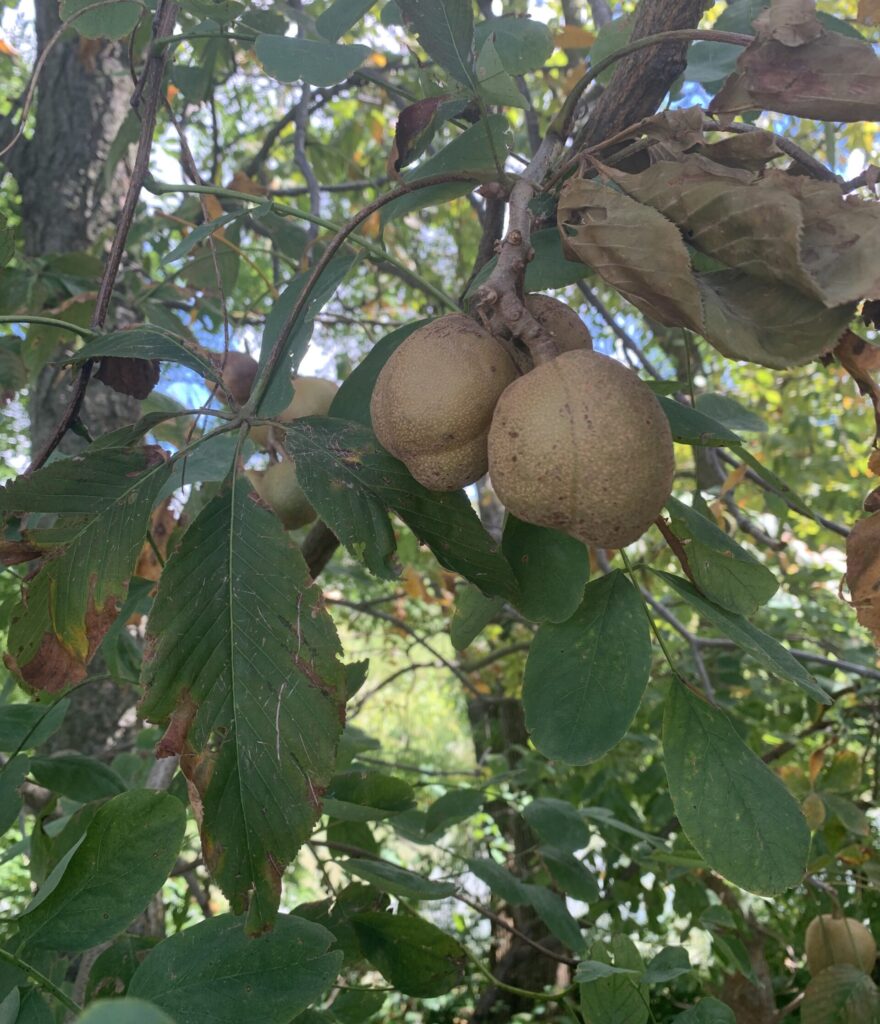
Sweet buckeye, Aesculus flava is difficult to differentiate from other buckeye species, but after comparing pictures of the fruit for I’m pretty sure this is specimen is an example. The seeds are high in saponins, which are bitter and toxic, but poorly absorbed by the human body; Native Americans would roast, mash, and leach the nuts to remove toxins for consumptions [source].
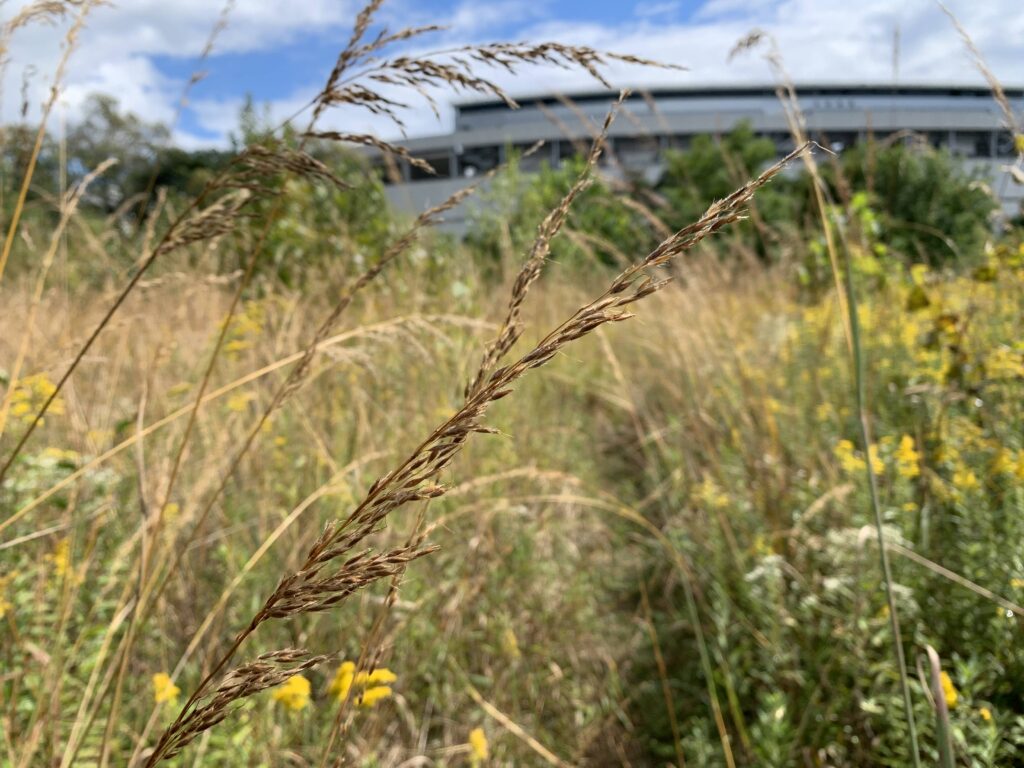
Canadian bluejoint, Calamagrostis canadensis
Grasses can be really difficult to tell apart, and many of the traits used for identification are on a small and detailed scale. See [here] for the full description of typical traits. Clumps of this grass provide habitat for many small mammal, bird, and snake species. Many insect species eat this plant, and it is a known foraging plant for cattle, horses, bison and elk, particularly in the spring before seed heads develop [source].
FOUR LOWEST CC native species:
American pokeweed has the lowest CC of the recorded native species, and is pictured and described earlier on this page. It has a low CC from an ecological viewpoint because it spreads extremely easily through birds eating the plentiful berries.
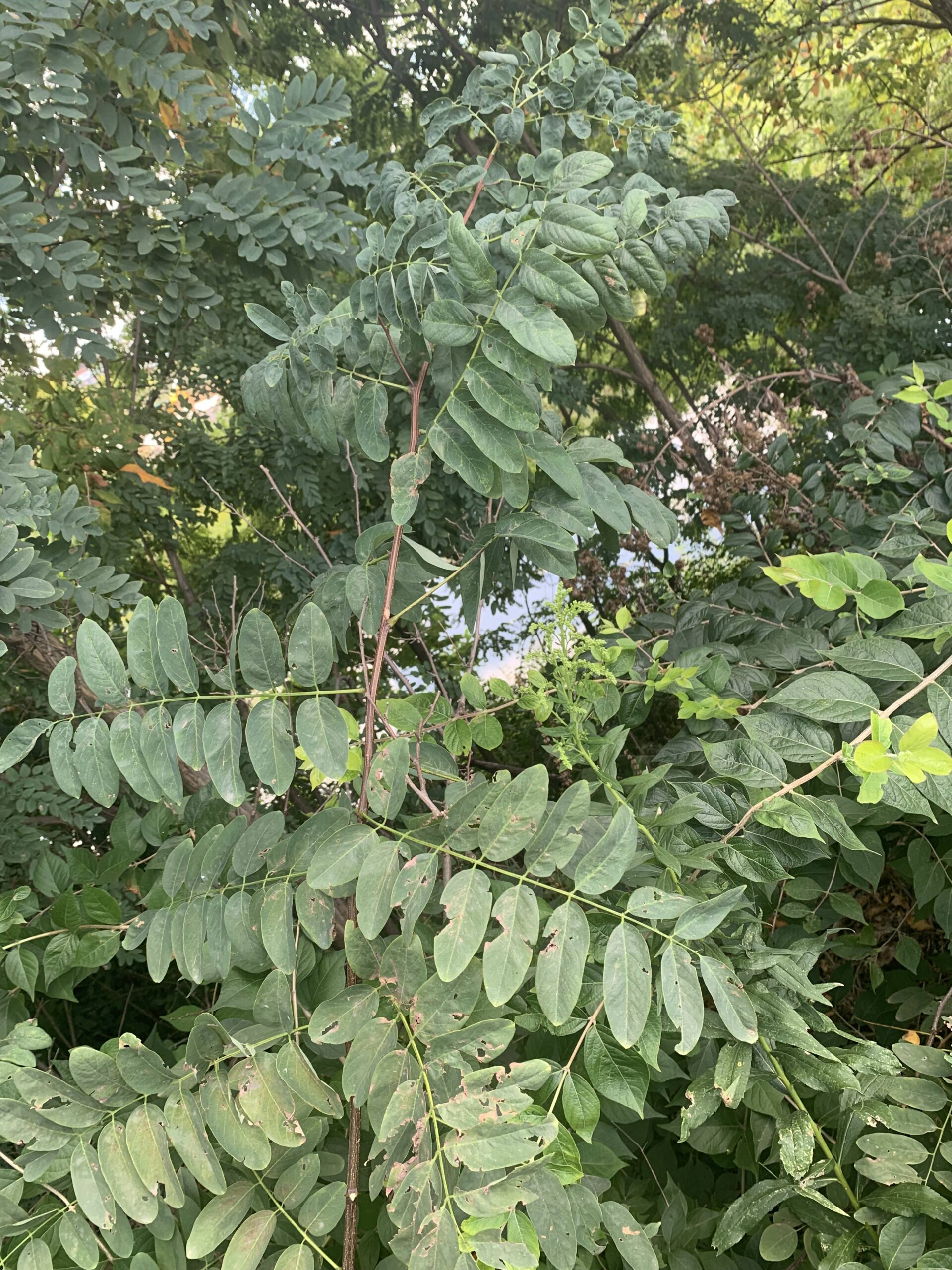
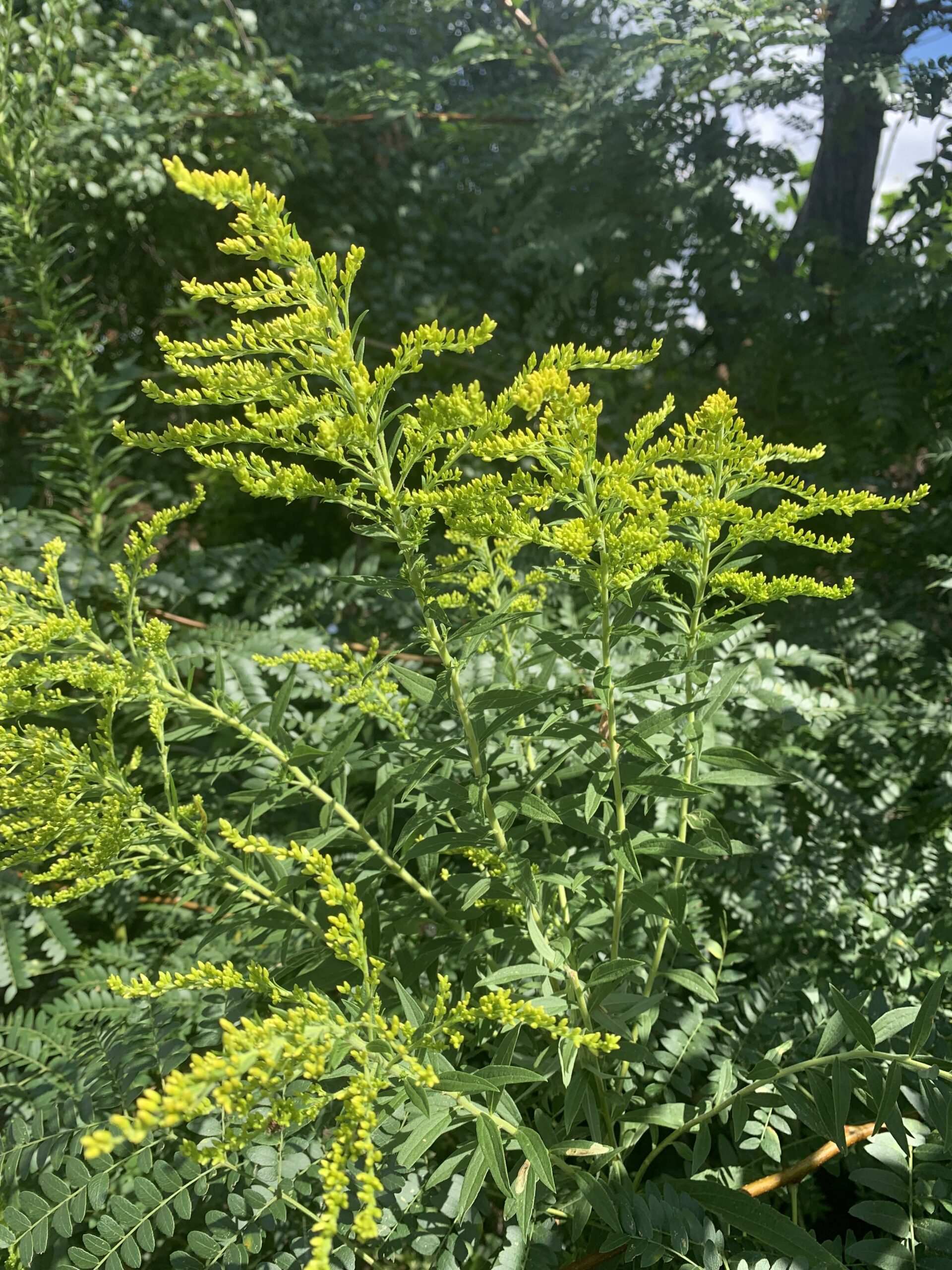
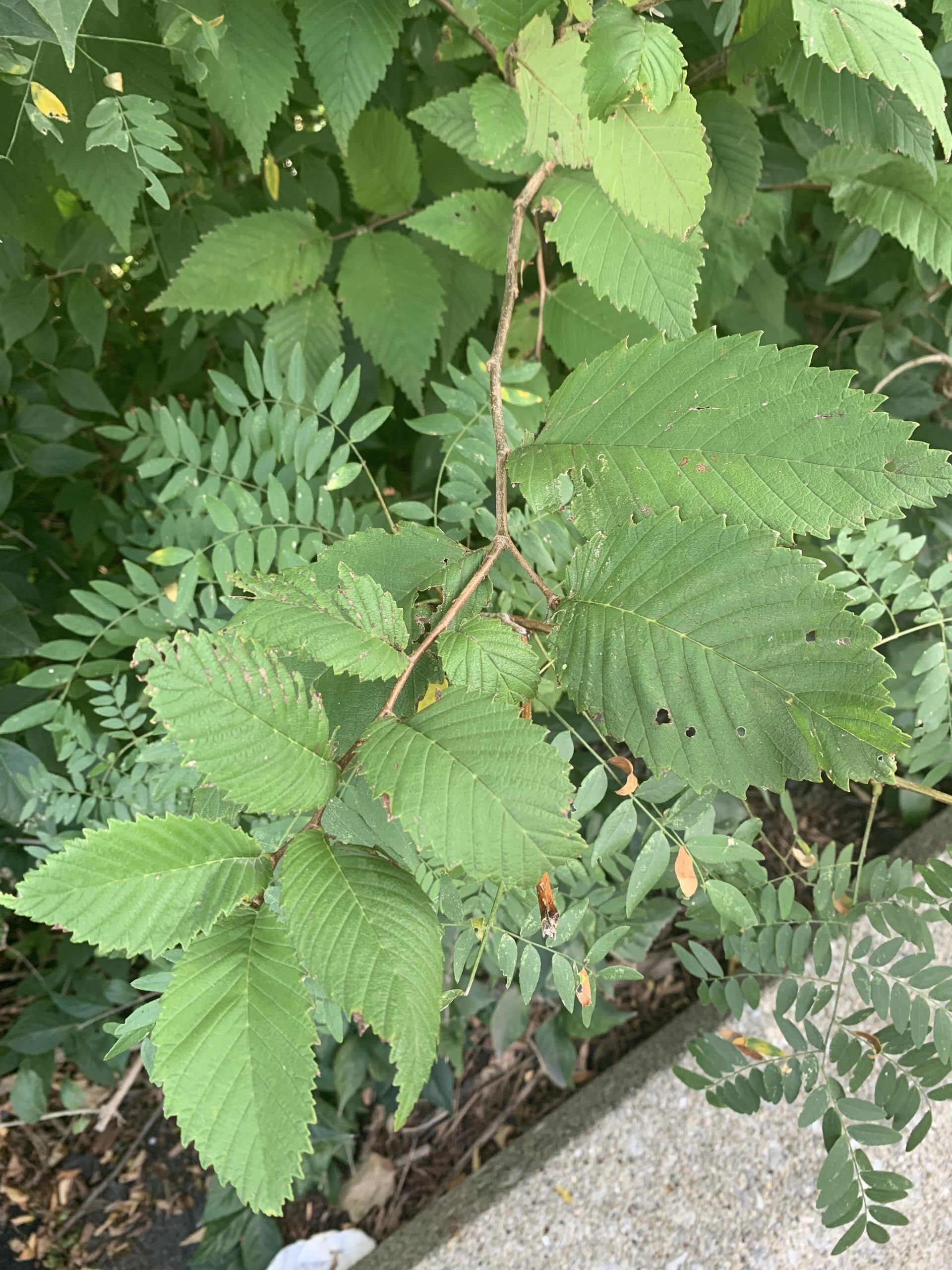
Black locust, Robinia pseudoacacia has rounded, pinnate compound leaves with 7-19 leaflets and thorns along the branches. The species grows very fast by fixing nitrogen, and the flowers are a source of food for honeybees [source].
Early goldenrod, Solidago juncea leaves are alternate, hairless, and slightly shiny. The larger and more mature leaves at the base of the plant have slight serration. Flowers often branch upwards and outwards at the end. The flowers attract many pollinators and song birds eat the seeds [source].
American elm, Ulmus americana leaves are opposite and serrated with an uneven base and straight, pinnate venation. The biggest threat to this species is the fungus Dutch Elm Disease, which attacks the tree’s water conducting tissues and is spread by elm bark beetles [source].
PART TWO: FOUR INVASIVE SPECIES (boo, hiss)

Common buckthorn, Rhamnus cathartica leaves are sub-opposite, glossy, serrated, and rounded with a pointed tip and wavy margin. The fruits are small and black in bunches. This tree will eliminate understory diversity over time, and the seeds have a laxative effect on birds that aids in seed dispersal [source].
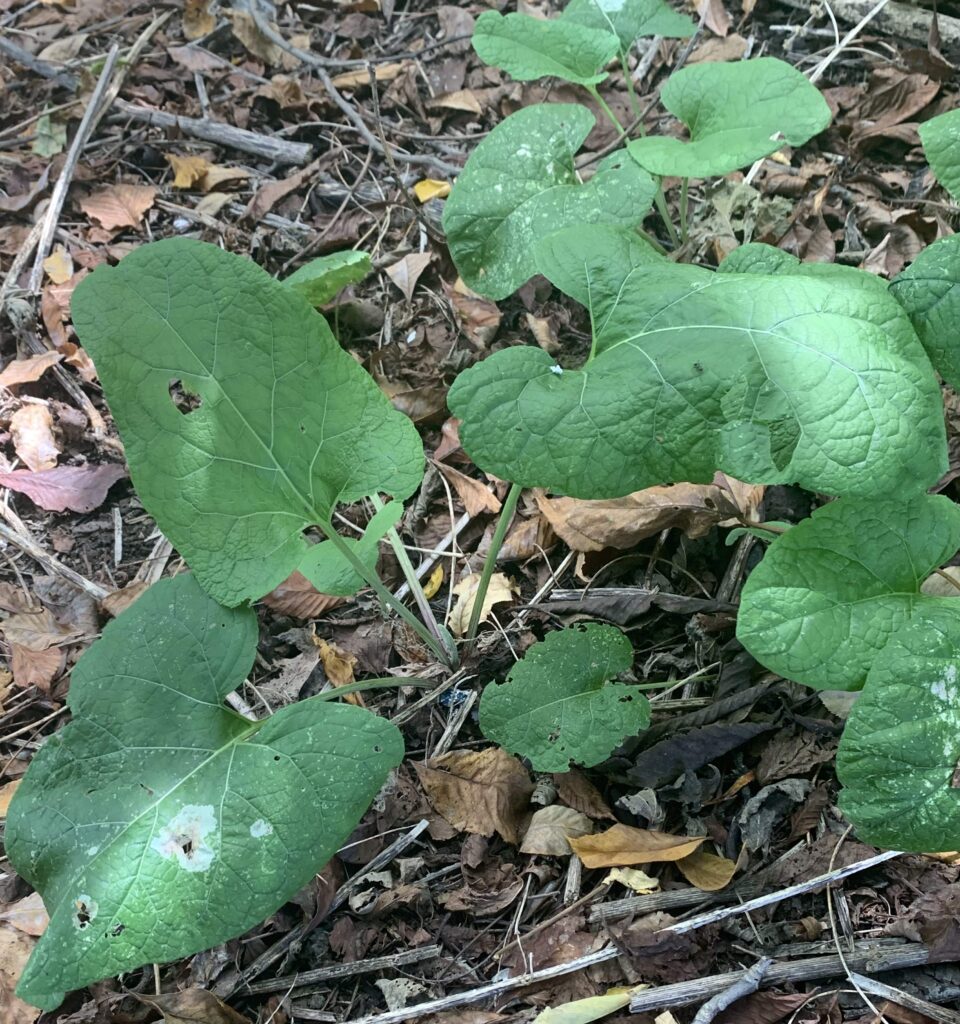
Greater burdock, Arctium lappa is most well known for the hooked burs that stick to clothing/fur, not present in this specimen. The leaves are large and heart-shaped, with a wavy margin. This species is cultivated in parts of Asia for its edible roots and medicinal uses (increased circulation, toxin removal) [source].
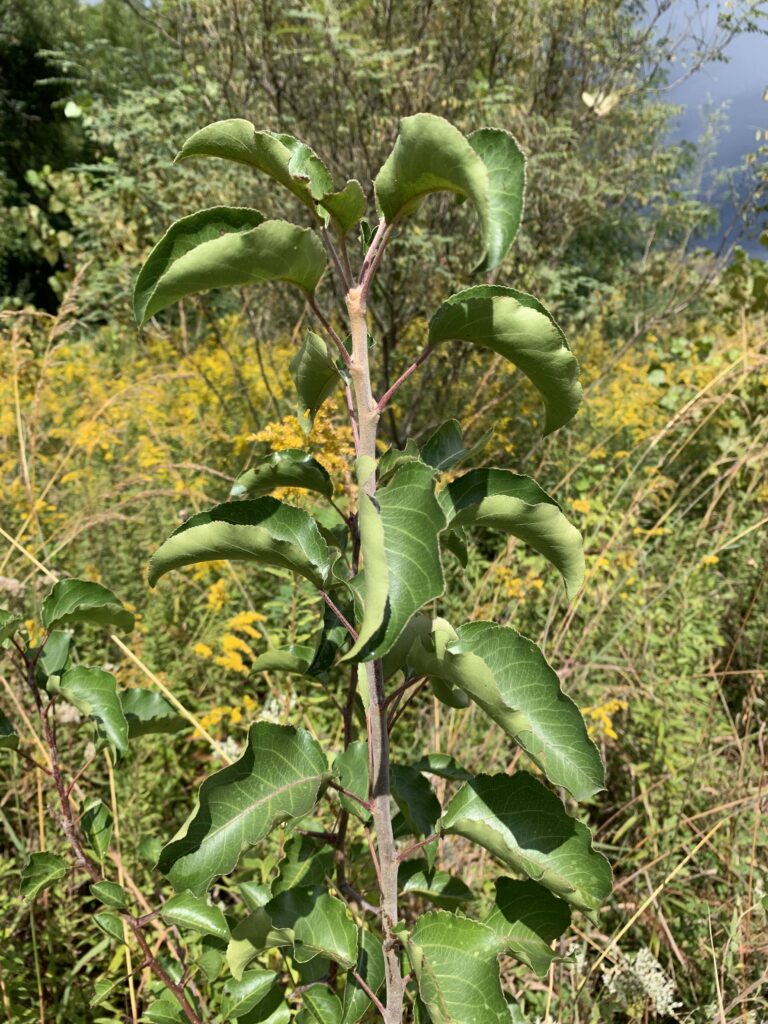
Callery pear, Pyrus calleryana (left) leaves are alternate, waxy, teardrop shaped, and finely toothed with a wavy margin. It spreads through both birds eating the seeds and vegetative roots developing new shoots, making it particularly difficult to remove [source].
Purple crownvetch, Securigera varia (right) leaves are rounded pinnately compound, usually with 15 leaflets. The roots of this plant are effective in combating erosion, which is part of why it was originally introduced. However, it grows quickly and can smother other ground cover [source].
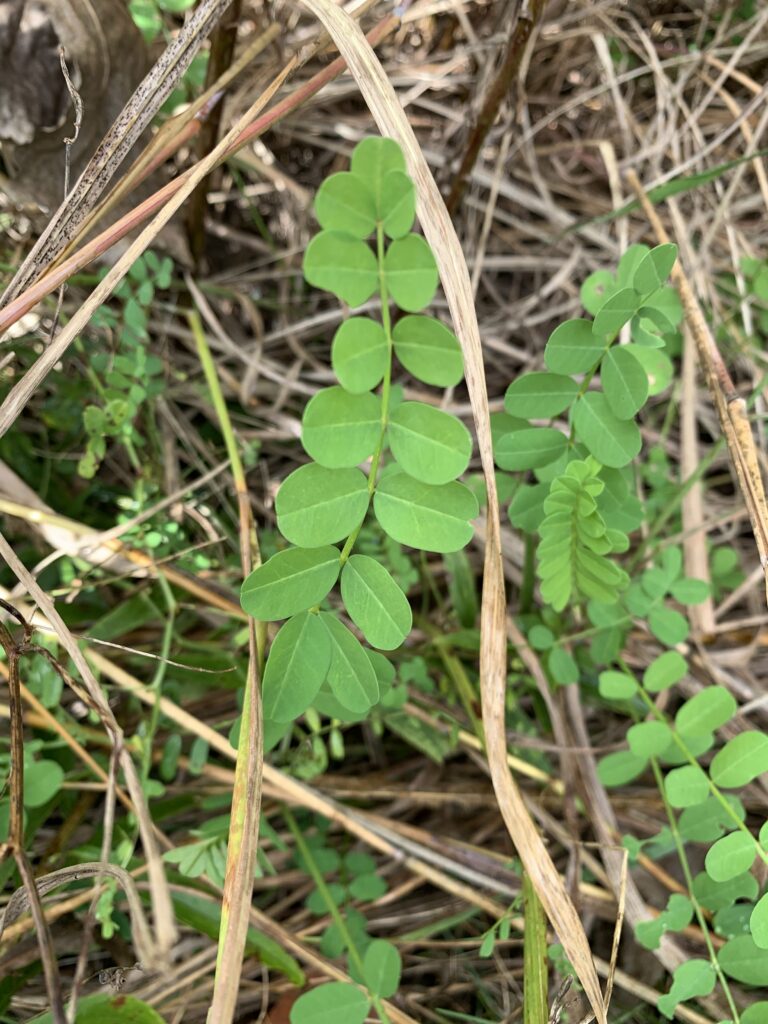
PART THREE: FOUR SUBSTRATE-ASSOCIATED SPECIES
Four plants mentioned in Jane Forsyth’s “Geobotany” article:
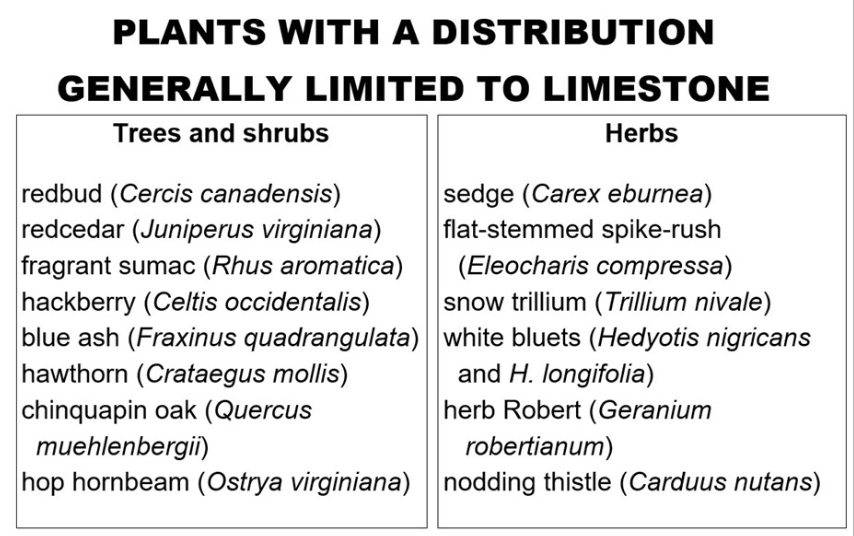
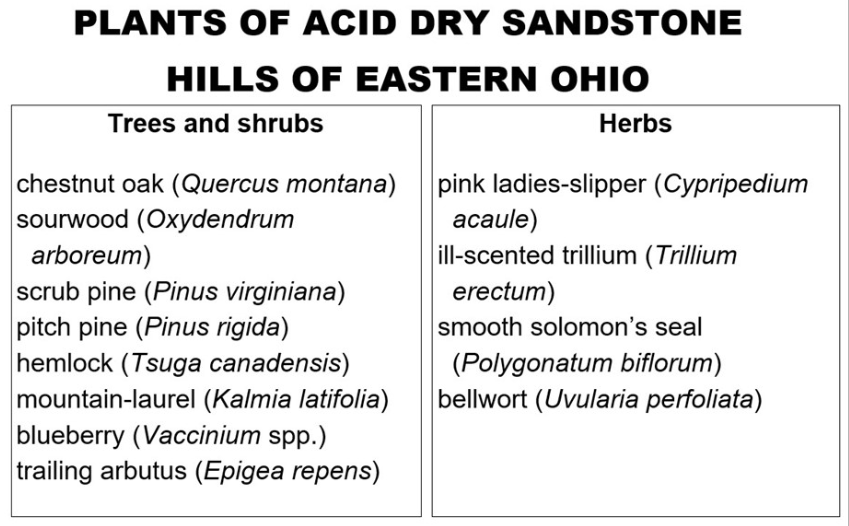


Swamp white oak, Quercus bicolor is described above, and associated with the high-lime clay-rich till of the western Ohio plains. Columbus falls well within this boundary, so this occurrence of the species aligns with prior research.
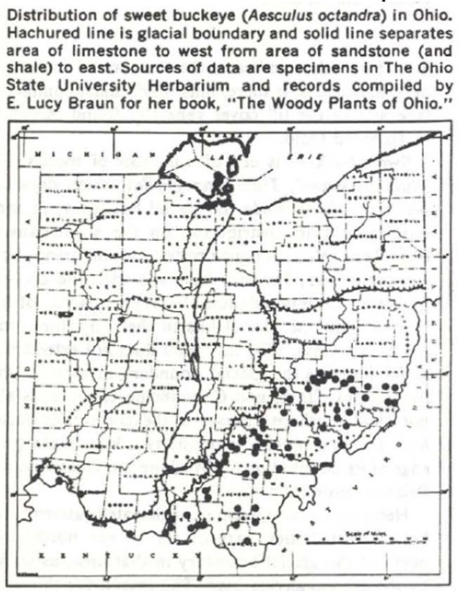
Sweet or yellow buckeye, Aesculus octandra or Aesculus flava, is described above, and is associated with the unglaciated south-eastern regions of Ohio. Based on Forsyth’s article, this indicates misidentification at my survey site.

